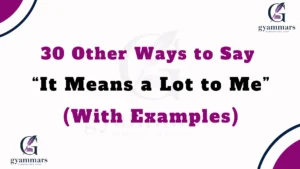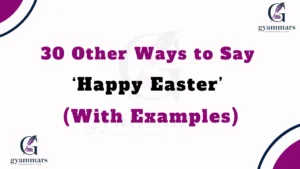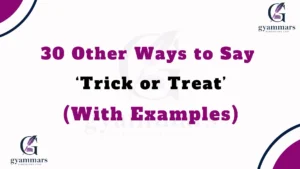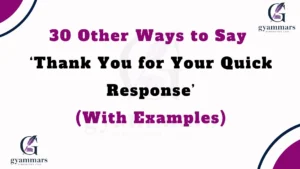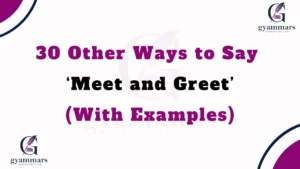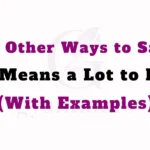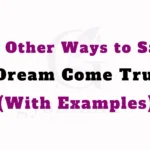In everyday conversations, we often say “No worries” to reassure others, ease concerns, or respond kindly. While it’s a great phrase, switching it up can add warmth, professionalism, or personality to your communication. Whether you’re speaking with friends, colleagues, or clients, finding the right words helps you connect better and express yourself with more thoughtfulness. This guide explores 30 meaningful alternatives to “No Worries,” complete with examples and best-use cases.
What Does “No Worries” Mean?
A casual phrase used to reassure someone that there’s no issue or concern.”No worries” is often used to respond to an apology or gratitude. It lets the other person know that you’re not upset and that everything is fine.
“No worries!”When you want to quickly reassure someone in a friendly and casual way.Casual, kind, and relaxed.While widely accepted, it can sometimes be too informal for professional settings.
Is It Professional/Polite to Say “No Worries”?
When It’s Professional: In casual workplace chats (e.g., Slack, emails with close colleagues). When reassuring a coworker after a minor mistake. In friendly business environments with relaxed communication styles.
When It’s Less Professional: Formal client interactions (e.g., customer support, legal, finance). When responding to serious apologies (a more thoughtful response is better). In situations that require more politeness or clarity. For formal settings, alternatives like “Not a problem” or “You’re welcome” may be more appropriate.
Pros & Cons of Saying “No Worries”
Pros:
- Friendly & casual → Helps set a relaxed tone.
- Short & simple → Easy to use in quick replies.
- Reassuring → Makes people feel at ease.
Cons:
- Too informal → Not always suitable for professional settings.
- May seem dismissive → Some people might feel their concerns aren’t taken seriously.
- Lacks warmth in serious situations → A more personal response may be needed.
Synonyms For “No Worries”
- No problem!
- It’s all good!
- You’re good!
- Not a big deal!
- No sweat!
- Anytime!
- No stress!
- Don’t worry about it!
- Happy to help!
- No trouble at all!
- Think nothing of it!
- You’re fine!
- No harm done!
- Forget about it!
- All good here!
- No issue!
- No bother at all!
- Don’t give it a second thought!
- It’s nothing!
- Absolutely no problem!
- That’s okay!
- You’re totally fine!
- Not an issue!
- No biggie!
- Consider it nothing!
- Nothing to worry about!
- That’s alright!
- Not at all!
- I’ve got you covered!
- My pleasure!
1. No Problem!
Definition: A common alternative that reassures someone there’s no issue.
Explanation: This phrase is straightforward and friendly, making it a great go-to response.
Example: Person A: “Sorry for being late!” Person B: “No problem!”
Best Use: When you want a simple and neutral response.
Tone: Friendly and casual.
Additional Notes: Works well in both personal and semi-professional settings.
2. It’s All Good!
Definition: A relaxed way to say there’s no issue.
Explanation: This phrase adds a positive and reassuring tone, making it ideal for casual interactions.
Example: Person A: “I hope I didn’t inconvenience you.” Person B: “It’s all good!”
Best Use: When you want to keep the mood light and positive.
Tone: Friendly, laid-back.
Additional Notes: Best suited for informal conversations.
3. You’re Good!
Definition: A short and casual way to say “No worries.”
Explanation: This phrase lets the other person know that everything is fine without overexplaining.
Example: Person A: “Did I mess up the order?” Person B: “You’re good!”
Best Use: When responding to small mistakes or concerns.
Tone: Informal and reassuring.
Additional Notes: Works well among friends or coworkers.
4. Not a Big Deal!
Definition: A phrase that minimizes the issue.
Explanation: This phrase helps the other person feel less guilty or stressed.
Example: Person A: “I forgot to bring your book back!” Person B: “Not a big deal!”
Best Use: When you want to downplay a mistake or oversight.
Tone: Casual and reassuring.
Additional Notes: Works well in low-stakes situations.
5. No Sweat!
Definition: A lighthearted way to say there’s no issue.
Explanation: This phrase gives off a chill, easygoing vibe, making it perfect for friendly interactions.
Example: Person A: “I hope I didn’t bother you with my question.” Person B: “No sweat!”
Best Use: When responding to small concerns in a fun way.
Tone: Playful and casual.
Additional Notes: Best for personal or informal settings.
6. Anytime!
Definition: A warm way to express that you’re happy to help.
Explanation: This phrase shows generosity and willingness, making it a great way to respond when someone thanks you. It emphasizes that you’re always available to assist.
Example: Person A: “Thanks for helping me with my project!” Person B: “Anytime!”
Best Use: When responding to gratitude in a friendly way.
Tone: Warm and supportive.
Additional Notes: Works well in both casual and professional conversations.
7. No Stress!
Definition: A comforting way to tell someone not to worry.
Explanation: This phrase helps people feel more at ease and reassured. It’s especially useful in situations where someone might be feeling guilty or anxious.
Example: Person A: “Sorry for the confusion!” Person B: “No stress!”
Best Use: When you want to relieve tension and keep things light.
Tone: Relaxed and kind.
Additional Notes: Best for friendly settings.
8. Don’t Worry About It!
Definition: A direct and reassuring phrase that tells someone there’s nothing to be concerned about.
Explanation: This phrase clearly expresses that the issue is not a big deal and the other person shouldn’t feel bad about it.
Example: Person A: “I’m really sorry I forgot our meeting time!” Person B: “Don’t worry about it!”
Best Use: When someone is over-apologizing, and you want to reassure them.
Tone: Kind and understanding.
Additional Notes: Works in both personal and semi-professional settings.
9. Happy to Help!
Definition: A friendly way to acknowledge someone’s gratitude.
Explanation: Instead of dismissing their thanks, this phrase adds a positive and warm tone.
Example: Person A: “I appreciate you helping me move!” Person B: “Happy to help!”
Best Use: When someone thanks you for assistance.
Tone: Warm, welcoming, and supportive.
Additional Notes: Works well in customer service, workplace, and personal settings.
10. No Trouble at All!
Definition: A polite way to say that something was not inconvenient.
Explanation: This phrase reassures the other person that helping them was easy and not a hassle.
Example: Person A: “I hope it wasn’t too much trouble helping me out!” Person B: “No trouble at all!”
Best Use: When you want to assure someone they weren’t a burden.
Tone: Polite, professional, and caring.
Additional Notes: Works well in formal and semi-formal situations.
11. Think Nothing of It!
Definition: A classic and formal way to say “No worries.”
Explanation: This phrase emphasizes that the favor or action was so insignificant that the other person shouldn’t even think about it.
Example: Person A: “I really appreciate your support!” Person B: “Think nothing of it!”
Best Use: When you want to sound sophisticated and polite.
Tone: Formal, kind, and reassuring.
Additional Notes: Works best in polite social settings.
12. You’re Fine!
Definition: A direct way to reassure someone.
Explanation: This phrase lets the other person know they haven’t done anything wrong and there’s nothing to worry about.
Example: Person A: “Did I mess up the schedule?” Person B: “You’re fine!”
Best Use: When someone is nervous about making a mistake.
Tone: Casual, comforting, and understanding.
Additional Notes: Best used in friendly or informal settings.
13. No Harm Done!
Definition: A way to express that no damage or inconvenience was caused.
Explanation: This phrase reassures the other person that their actions didn’t result in any negative consequences.
Example: Person A: “I accidentally deleted that file!” Person B: “No harm done! I have a backup.”
Best Use: When someone makes a mistake and you want to ease their worries.
Tone: Casual and forgiving.
Additional Notes: Great for workplace and personal settings.
14. Forget About It!
Definition: A relaxed and informal way to say “No worries.”
Explanation: This phrase tells someone that the issue is so small, they don’t need to think about it anymore.
Example: Person A: “I owe you for covering my shift!” Person B: “Forget about it!”
Best Use: When you want to dismiss something in a lighthearted way.
Tone: Casual, playful.
Additional Notes: Best for close friends and informal situations.
15. All Good Here!
Definition: A positive way to reassure someone that there are no problems.
Explanation: This phrase is friendly and calming, letting the other person know everything is fine.
Example: Person A: “I hope I didn’t mess anything up.” Person B: “All good here!”
Best Use: When someone is concerned about causing issues.
Tone: Friendly, positive, and reassuring.
Additional Notes: Works well in both personal and work settings.
16. No Issue!
Definition: A simple and professional way to say “No worries.”
Explanation: This phrase is clear and slightly more formal, making it good for workplace interactions.
Example: Person A: “Sorry for the last-minute change!” Person B: “No issue at all!”
Best Use: When responding to business or work-related concerns.
Tone: Professional and polite.
Additional Notes: Works well in emails and meetings.
17. No Bother at All!
Definition: A polite way to assure someone they weren’t an inconvenience.
Explanation: This phrase helps someone feel more at ease when they think they’ve caused trouble.
Example: Person A: “Sorry to call you so late!” Person B: “No bother at all!”
Best Use: When someone is concerned about disturbing or inconveniencing you.
Tone: Polite, formal, and warm.
Additional Notes: Works well in both personal and professional settings.
18. Don’t Give It a Second Thought!
Definition: A phrase that tells someone they don’t need to worry about it at all.
Explanation: This expression reassures the other person that they shouldn’t even think about it anymore.
Example: Person A: “I feel bad for forgetting your birthday!” Person B: “Don’t give it a second thought!”
Best Use: When you want to completely dismiss the concern.
Tone: Reassuring and warm.
Additional Notes: Best suited for friendships and polite interactions.
19. It’s Nothing!
Definition: A very simple way to downplay an issue or concern.
Explanation: This phrase makes it clear that there’s no problem at all.
Example: Person A: “Thanks for covering my shift!” Person B: “It’s nothing!”
Best Use: When you want to casually minimize the situation.
Tone: Informal and relaxed.
Additional Notes: Best for close friends or colleagues.
20. Absolutely No Problem!
Definition: A slightly more formal way to say “No worries.”
Explanation: This phrase adds emphasis to reassure someone that everything is fine.
Example: Person A: “I really appreciate your help with this report!” Person B: “Absolutely no problem!”
Best Use: When you want to sound extra reassuring and polite.
Tone: Professional, warm, and polite.
Additional Notes: Great for business and customer service settings.
21. That’s Okay!
Definition: A soft and gentle way to let someone know there’s no problem.
Explanation: This phrase helps ease someone’s guilt or concern in a kind way.
Example: Person A: “I missed your call, sorry!” Person B: “That’s okay!”
Best Use: When someone apologizes for a small mistake.
Tone: Warm, understanding, and kind.
Additional Notes: Works well in personal and casual settings.
22. You’re Totally Fine!
Definition: A friendly way to reassure someone that they haven’t done anything wrong.
Explanation: This phrase emphasizes that the other person is completely okay and shouldn’t feel bad.
Example: Person A: “I’m so sorry for forgetting!” Person B: “You’re totally fine!”
Best Use: When someone is feeling guilty and you want to comfort them.
Tone: Reassuring and friendly.
Additional Notes: Works well in both personal and semi-formal settings.
23. Not an Issue!
Definition: A neutral and professional way to say “No worries.”
Explanation: This phrase makes it clear that there is no problem at all.
Example: Person A: “I hope this last-minute request isn’t a problem!” Person B: “Not an issue!”
Best Use: When responding to work-related requests or concerns.
Tone: Polite, professional, and neutral.
Additional Notes: Works well in formal emails and meetings.
24. No Biggie!
Definition: A fun and casual way to say “No worries.”
Explanation: This phrase keeps things lighthearted and relaxed.
Example: Person A: “I forgot to bring your book back!” Person B: “No biggie!”
Best Use: When you want to sound playful and easygoing.
Tone: Friendly and casual.
Additional Notes: Best used in informal conversations.
25. Consider It Nothing!
Definition: A slightly formal way to dismiss a concern.
Explanation: This phrase helps ease the other person’s worry by emphasizing that the issue was insignificant.
Example: Person A: “I hope I didn’t inconvenience you.” Person B: “Consider it nothing!”
Best Use: When someone expresses concern, and you want to be extra polite.
Tone: Formal, warm, and polite.
Additional Notes: Great for business and professional settings.
26. Nothing to Worry About!
Definition: A reassuring way to say that everything is okay.
Explanation: This phrase emphasizes that there is absolutely no reason for concern.
Example: Person A: “I’m really sorry for the mistake!” Person B: “Nothing to worry about!”
Best Use: When you want to completely put someone’s mind at ease.
Tone: Warm and comforting.
Additional Notes: Works well in both casual and professional settings.
27. That’s Alright!
Definition: A simple and polite way to accept an apology.
Explanation: This phrase helps soften the situation and keep the conversation moving smoothly.
Example: Person A: “I forgot to send you the details earlier!” Person B: “That’s alright!”
Best Use: When someone apologizes for a minor mistake.
Tone: Friendly, neutral, and warm.
Additional Notes: Works well in casual and work settings.
28. Not at All!
Definition: A polite and formal way to dismiss a concern.
Explanation: This phrase is often used when responding to gratitude or an apology.
Example: Person A: “I really appreciate your help!” Person B: “Not at all!”
Best Use: When you want to sound refined and kind.
Tone: Formal and warm.
Additional Notes: Best used in polite and professional conversations.
29. I’ve Got You Covered!
Definition: A reassuring phrase that expresses support.
Explanation: This phrase shows that you are there to help and take care of the situation.
Example: Person A: “Can you handle this task for me?” Person B: “I’ve got you covered!”
Best Use: When you want to sound supportive and reliable.
Tone: Friendly and confident.
Additional Notes: Works well in team settings and friendships.
30. My Pleasure!
Definition: A warm and polite way to acknowledge gratitude.
Explanation: Instead of saying “No worries,” this phrase makes the other person feel appreciated.
Example: Person A: “Thanks for helping me out!” Person B: “My pleasure!”
Best Use: When someone thanks you, and you want to sound warm and professional.
Tone: Formal, polite, and kind.
Additional Notes: Best suited for customer service, business, and formal conversations.
Conclusion
Using the right words to replace “No worries” helps you communicate in a more meaningful and appropriate way. Whether you want to sound friendly, professional, or warm, choosing the right phrase improves your interactions. By using these alternatives, you can express kindness, maintain professionalism, and make others feel at ease.
FAQs
1. Is ‘No Worries’ a Formal Phrase?
Answer: No, ‘No Worries’ is generally considered informal. While it’s widely accepted in casual conversations, it may not be suitable for highly professional settings like corporate emails or formal business meetings. Instead, you can use alternatives like “Not an issue” or “Absolutely no problem” in professional communication.
2. Is It Okay to Say ‘No Worries’ in Customer Service?
Answer: It depends on the context and company culture. Some businesses prefer more formal and professional responses like “My pleasure” or “Happy to help”, as ‘No Worries’ may sound too casual or dismissive. However, in relaxed industries, it can still be an acceptable and friendly response.
3. Can ‘No Worries’ Sound Dismissive?
Answer: Yes, in some cases. While usually meant to be reassuring, ‘No Worries’ might sometimes come across as indifferent, especially if the other person expects a more empathetic response. In situations where someone is apologizing sincerely, saying “No harm done” or “It’s totally fine” might sound more compassionate.
4. What’s the Best Professional Alternative to ‘No Worries’?
Answer: Some of the best professional alternatives include:
- “Not a problem at all.”
- “No issue whatsoever.”
- “Absolutely no trouble.”
- “Happy to assist.”
These alternatives maintain a polite and professional tone while still being warm and reassuring.
5. What’s a More Warm and Friendly Alternative to ‘No Worries’?
Answer: If you want to add warmth and care to your response, try:
- “Anytime!”
- “Always happy to help!”
- “I’ve got you covered!”
- “It’s my pleasure!”
Also Read This:
30 Other Ways to Say ‘Will Do’ (With Examples)
Quit vs Resign: Clear Up the Confusion Once and For All
Tying or Tieing? The Right Way to Spell It
Scrapped vs. Scraped: Clearing the Confusion Once and for All
Pick-Up, Pick Up, or Pickup: What’s the Correct Usage?
Cancellation vs Cancelation: Which Spelling is Correct?

“Emma Rose at Grammar Synonyms is your go-to expert for everything related to language and expression. Whether you’re refining your grammar, searching for the perfect synonym, or looking for creative ways to improve your writing, Emma Rose provides the tools and inspiration you need. With a wide range of resources designed to elevate your communication, Grammar Synonyms helps you find just the right words to make every sentence shine.

